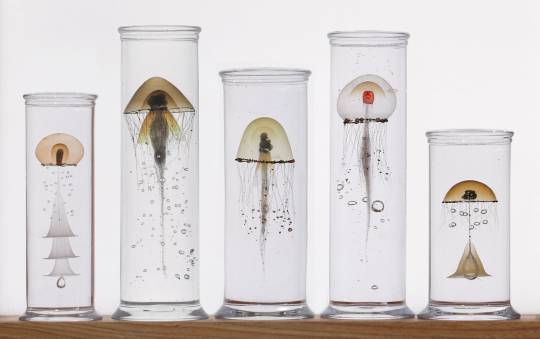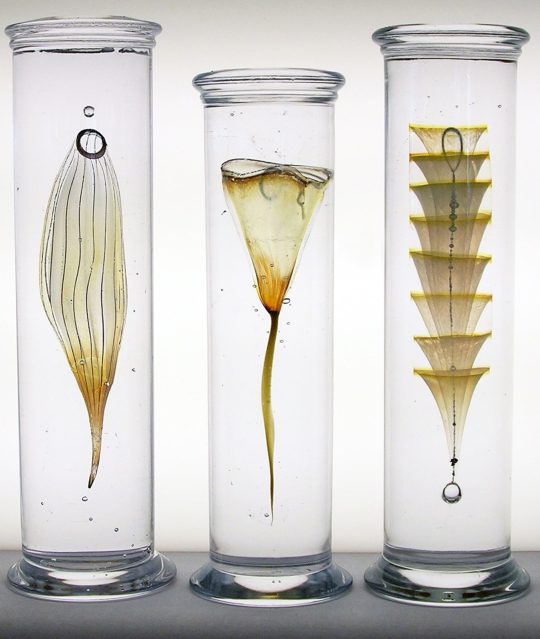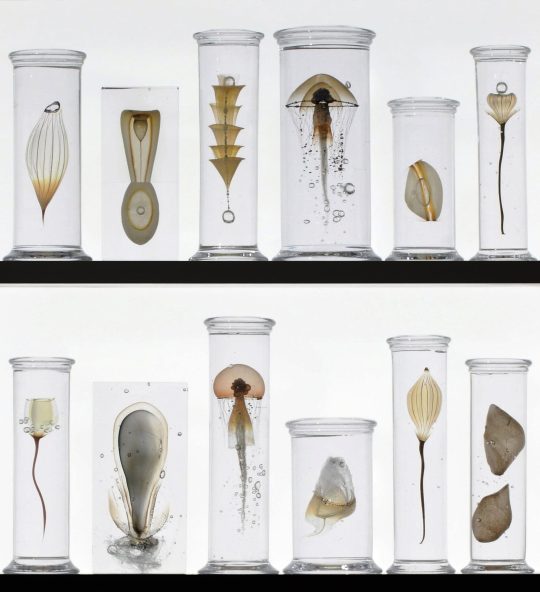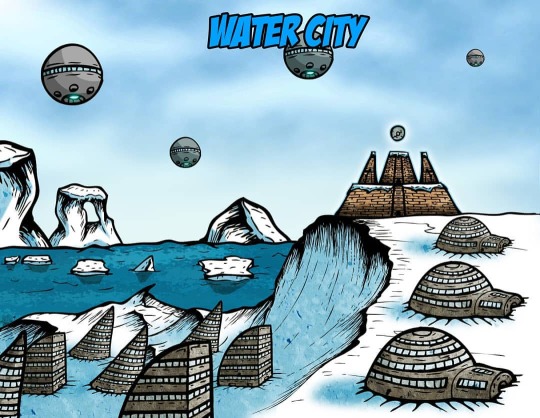#The Pangaean Sea
Text


COBRA'S FINEST -- ARTHUR ADAMS AFTER BUDD ROOT.
PIC(S) INFO: Spotlight on a Baroness, military intelligence officer for COBRA Command, pin-up by American comic-bokk artist, Arthur Adams, c. 2002.
Resolution at 1737x2878 & 1041x1600.
"Evil never looked so good. Art Adams notes this piece as created in July of 2002 and as an homage to Budd Root's variant cover for "Cavewoman: Pangaean Sea" #0 (published in 2000). A gorgeous piece of this fascist femme fatale created in ink over graphite on bright white 9" x 12" Bristol board."
-- HERITAGE AUCTIONS (Comics art)
Source: https://comics.ha.com/itm/original-comic-art/splash-pages/arthur-adams-baroness-from-gi-joe-pin-up-illustration-original-art-2002-/a/7187-94391.s
#Baroness#The Baroness#Arthur Adams#Cavewoman: Pangaean Sea#G.I. Joe#COBRA#Pin-up Art#Arthur Adams Art#Budd Root Art#Art Adams#Cavewoman#COBRA Command#The Pangaean Sea#Pin-up Girls#Pin-ups#Cobra Baroness#Baroness Anastasia DeCobray#Budd Root#Cobra#Hail Cobra!#Anastasia DeCoBray#Cobra Intelligence#Meriam Cooper#Cavewoman Meriam Cooper#Pangaean Sea
41 notes
·
View notes
Text

Cavewoman Pangaean Sea 2 pg21 by Budd Root
52 notes
·
View notes
Text
And barbarians were inventors not only of philosophy, but almost of every art. The Egyptians were the first to introduce astrology among men. Similarly also the Chaldeans. The Egyptians first showed how to burn lamps, and divided the year into twelve months, prohibited intercourse with women in the temples, and enacted that no one should enter the temples from a woman without bathing. Again, they were the inventors of geometry. There are some who say that the Carians invented prognostication by the stars. The Phrygians were the first who attended to the flight of birds. And the Tuscans, neighbours of Italy, were adepts at the art of the Haruspex. The Isaurians and the Arabians invented augury, as the Telmesians divination by dreams. The Etruscans invented the trumpet, and the Phrygians the flute. For Olympus and Marsyas were Phrygians. And Cadmus, the inventor of letters among the Greeks, as Euphorus says, was a Phoenician; whence also Herodotus writes that they were called Phoenician letters. And they say that the Phoenicians and the Syrians first invented letters; and that Apis, an aboriginal inhabitant of Egypt, invented the healing art before Io came into Egypt. But afterwards they say that Asclepius improved the art. Atlas the Libyan was the first who built a ship and navigated the sea. Kelmis and Damnaneus, Idaean Dactyli, first discovered iron in Cyprus. Another Idaean discovered the tempering of brass; according to Hesiod, a Scythian. The Thracians first invented what is called a scimitar (arph), -- it is a curved sword, -- and were the first to use shields on horseback. Similarly also the Illyrians invented the shield (pelth). Besides, they say that the Tuscans invented the art of moulding clay; and that Itanus (he was a Samnite) first fashioned the oblong shield (qureos). Cadmus the Phoenician invented stonecutting, and discovered the gold mines on the Pangaean mountain. Further, another nation, the Cappadocians, first invented the instrument called the nabla, and the Assyrians in the same way the dichord. The Carthaginians were the first that constructed a triterme; and it was built by Bosporus, an aboriginal. Medea, the daughter of Æetas, a Colchian, first invented the dyeing of hair. Besides, the Noropes (they are a Paeonian race, and are now called the Norici) worked copper, and were the first that purified iron. Amycus the king of the Bebryci was the first inventor of boxing-gloves. In music, Olympus the Mysian practised the Lydian harmony; and the people called Troglodytes invented the sambuca, a musical instrument. It is said that the crooked pipe was invented by Satyrus the Phrygian; likewise also diatonic harmony by Hyagnis, a Phrygian too; and notes by Olympus, a Phrygian; as also the Phrygian harmony, and the half-Phrygian and the half-Lydian, by Marsyas, who belonged to the same region as those mentioned above. And the Doric was invented by Thamyris the Thracian. We have heard that the Persians were the first who fashioned the chariot, and bed, and footstool; and the Sidonians the first to construct a trireme. The Sicilians, close to Italy, were the first inventors of the phorminx, which is not much inferior to the lyre. And they invented castanets. In the time of Semiramis queen of the Assyrians, they relate that linen garments were invented. And Hellanicus says that Atossa queen of the Persians was the first who composed a letter. These things are reported by Seame of Mitylene, Theophrastus of Ephesus, Cydippus of Mantinea also Antiphanes, Aristodemus, and Aristotle and besides these, Philostephanus, and also Strato the Peripatetic, in his books Concerning Inventions. I have added a few details from them, in order to confirm the inventive and practically useful genius of the barbarians, by whom the Greeks profited in their studies. And if any one objects to the barbarous language, Anacharsis says, "All the Greeks speak Scythian to me."
Clement of Alexandria
21 notes
·
View notes
Photo

Cavewoman Pangaean sea 2000 Budd Root 6 Pack de Imagens Hentais - Enema Collection Cavewoman
#Cavewoman#cavewoman pangaean sea#Budd Root#jungle#drawing#draw#dibujo#disegno#bain#dinosaure#dessin
42 notes
·
View notes
Text










Imaginative Glass Specimens Are Suspended in Jars in Steffen Dam’s Cabinets of Curiosities
January 13, 2022
ThisIsColossal.com
Grace Ebert
All images courtesy of Heller Gallery
Held in tall, transparent jars are recreations of tiny jellyfish with wispy tentacles, plankton, and other delicate sea creatures by Danish artist Steffen Dam (previously). He sculpts the miniature organisms in glass and displays the exquisite creations in wooden boxes or medicine cases that evoke the 16th Century wunderkammers or cabinets of curiosities. Generally in the possession of aristocrats and monarchs, these encyclopedic collections predated museums and held objects that were valuable for scientific study and their ability to inspire wonder and awe. Although Dam’s sculptures reference the colors, textures, and shapes of real-life specimens, his imaginative works are inventive interpretations of evolution and biology.
Find more of the artist’s recent works on his site and at Heller Gallery in New York, where he’s represented.
Images:
1. Unamed
2. “Wunderkammer” (2021),
glass and illuminated wooden presentation box,
35 3/8 x 27 1/2 x 7 inches
3. Detail of “Wunderkammer” (2021),
glass and illuminated wooden presentation box,
35 3/8 x 27 1/2 x 7 inches
4. “Pangaean Zoology” (2018), 20 elements in glass, 72 inches
5. “Marine Group” (2020), glass and illuminated presentation box, 13 3/4 x 39 x 7 7/8 inches
6. “Specimen Block” (2017),
glass,
11 3/8 x 11 3/8 x 1 1/2 inches
7. “New Medicine” (2017),
glass and illuminated wooden presentation box
, 30 1/4 x 17 1/4 x 9 inches
8. “Marine Specimen Collection” (2018),
glass,
tallest 8 3/4 inches
9. Detail of “Specimen Cabinet” (2017), glass and illuminated
wooden presentation box,
39 1/4 x 24 3/8 x 9 3/8 inches
10. Detail of “The Journey to M31” (2021)
2 notes
·
View notes
Photo

Characters in the comic book. The pangaean people from when the Earth stuck together called pangea. The people of the water tribe lived in the cold parts of pangea close to Antarctica the lower region of the planet they live with the ocean their technology powered by liquid nitrogen they also swim with the creatures of the sea. The water people are the Retaw tribe part of the Rettam Thgil (light matter backwards) check it out in book 3 🌍🌏🌎 . www.thehetoesoftheworld.com. . Every country needs a hero where are you from? #Earth #heroesoftheworld #superheroesunite #letsgobeheroes #blackheroesmatter #blackartists #artcommissions #artstagram #characterdesign #teamHOTW #youaretheherooftheworld #comics #comicart (at Planet Earth) https://www.instagram.com/p/CD17m7LFnCN/?igshid=1qtk0mdhynb5l
#earth#heroesoftheworld#superheroesunite#letsgobeheroes#blackheroesmatter#blackartists#artcommissions#artstagram#characterdesign#teamhotw#youaretheherooftheworld#comics#comicart
0 notes
Text
As I rose from my bed, I felt the gentle sea breeze on my face, which was cut off by the slamming of my cabin door which I had become so accustomed to. Whatever arcane force was doing so, I had no idea, but I was just glad it took the liberty of preparing me a breakfast of salmon each morning. I sat at my table to eat, and I was thankful that even though the world was in crisis, I would be spending the rest of my days peacefully on a boat in the middle of an endless ocean.
Even the planet’s most polar regions had been melted away by human carelessness, and as people fell into panic and haste to build watercraft, they lost track of the different oceans, so the remaining survivors now lived on whatever little land they could find and a vast expanse covering the entire earth, which had become known as the Pangaean Ocean. All contact with anyone off the earth has been lost, and they are all presumed dead after a final transmission reporting that the oxygen supply was dropping rapidly.
I’m Andrew Dong, and I’m currently one of the people waiting to go insane and die, seeing as there’s nothing left we can do to save anything.
0 notes
Text
Status Update
Hi Pangaeans!
Just letting everyone know that I'm still around and that the game has not been abandoned. I'm more frequent on Facebook than anywhere else, but that's no excuse.
Anyway, It's come to my attention that RPG Maker MV's latest update really screwed up on the deployment feature which causes a bug to make the game crash. I'm waiting on word back on a fix on that. There's a couple other plugin bugs I need to deal with, but it seems like those are fixed for the most part.
Finally, there is another bug on the world map after you leave the port that causes the game to crash. It's for a specific battle area, but I'm not taking chances: Be sure to save your game as soon as you leave the port and then head for the Sea of Trees. As long as you don't go to the hills, you should be ok.
Thank you to everyone supporting the game. I expect these crippling personal issues will be settled after the first week of April. After which I'll be back to work!
0 notes
Link
In Italy, the dawn of the greatest empire in the history of the world is marked, not by broken marble pediments strewn across the seven hills of Rome, but modest three-toed footprints pressed into rocks far to the north, high in the Italian Alps. They were left by coastal dinosaurs patrolling the tidal flats of a tropical lagoon over 230 million years ago, and they’re among the earliest in Earth’s history. Perhaps more remarkable, though, than this sudden appearance of dinosaurs in ancient Europe, are the strange rocks which host them. The legendary reptile trackways appear just above crumbling bands of red clay that cut through the cream-colored peaks of the Dolomites—a striking dash in the strata that marks one of the most bizarre climate events ever.
Almost a quarter-billion years ago, rains soaked the arid wastes of the supercontinent Pangaea for more than a million years. When the floodwaters retreated, a new world was born.
I joined up with paleontologist Massimo Bernardi in Trento, Italy hoping to learn more about this primeval washout, known as the Carnian Pluvial Episode. It was one of the oddest climate events, and most severe biotic crises, in the history of life. We hopped into the museum truck of his Museo Delle Scienze and, before long, were winding through apple orchards that sloped off sun-splashed towers of ivory and rose-tinted dolomite. Here in northern Italy’s Adige Valley you’re as likely to be served strudel as gelato, and traveling from one mountain village to another represents a linguistic island-hop between Italian, German, and even Ladin, an ancient relic of Roman occupation. But among the jagged peaks that carve up this cultural collage, Bernardi was more interested in literal island-hopping between 230-million-year-old tropical atolls that had been thrust toward the stars and draped in snow.
Here in the mountains, the bottom of a prehistoric ocean meets the top of the sky, and gondolas hoist skiers up these ancient reef walls like alpine ammonites. In fact, the entire Dolomite region is a playground of exhumed lagoons, shallow seas, and tidal flats, part of a swath of Triassic rocks that extends all the way to Slovenia—lifted into the air ages later by Africa’s languid drift northward.
“Of course, they’re just rocks for most people,” said Bernardi about his hometown limestone, which piled up almost 2 miles thick in places, “But I kind of like trying to be the voice of those rocks.”
Bernardi is part of an international group of Carnian Pluvial Episode researchers, trying to reconstruct how this obscure spasm of extreme climate change tucked into the middle of the Triassic period rerouted the trajectory of life on Earth, and—if he’s right—launched the near-eternal age of the dinosaurs.
The crisis started with a familiar culprit. Two hundred and thirty-four million years ago, gigantic pulses of carbon dioxide erupted into the atmosphere from volcanoes at the bottom of the ocean—volcanoes whose frozen magma today can be found on the other side of the planet, grafted onto the side of British Columbia. This earthly belch of CO2 drove intense bouts of global warming, ocean acidification, mass extinction, and, most notably, a barrage of extreme rainfall and mountain-flattening mega-monsoons still visible in rocks around the world.
In Italy, the episode appears in places as a muddy red mess, many meters thick, that laterally slices through the white ocean rock of the Dolomites. Above and below this incongruous red-clay layer, in the kilometers of classic dolomite that sandwich it, one can find seashells living in what were the former white sands and reefs of a prehistoric Bora Bora–like platform almost 50 miles offshore. But among the surprising red layers of the Carnian Pluvial Episode itself one suddenly finds coals from forests, and lake sediments. The onshore world had somehow overrun the offshore one.
[Read: That dinosaur-killing asteroid? It triggered global warming, too]
The global warming pulse had fueled violent storms and lashing rains that attacked Pangaea, leveled the topography—eroding away whatever interesting terrain existed on the mainland—and dumped it all into the ocean. In the Dolomites the tropical island paradise was suddenly smothered by this red mud and swallowed up by a bloating supercontinental shoreline.
Similar signals of extreme rainfall and humidity are found in rocks all over the earth, from Japan to Argentina, as lakes and rivers briefly soaked a parched Pangaea. The extreme climate change apparently stressed trees so much that—from Hungary to Arizona—they exploded in resin (a defense mechanism seen in modern conifers under duress), leaving behind the first widespread deposits of amber in the fossil record, as documented by University of Göttingen botanist Leyla Seyfullah.
Like other similar heat waves deep in Earth’s past, the crisis was accompanied by sweeping extinctions. A menagerie of lumbering beasts (many of them unfairly consigned to the C-list of natural-history museums), like rhynchosaurs and dicynodonts, was all but exterminated; while in the ocean the disaster is marked by a massacre of reefs, sea lilies, shelled octopus relatives, and a sinuous group of marine reptiles called thalattosaurs.
Oxygen isotopes from the fossil teeth of tiny sea creatures reveal that the entire episode was kicked off by warming of only about 4–7 degrees Celsius—roughly the same magnitude predicted for our own world under a business-as-usual carbon-emissions scenario.
“We don’t need an experiment in a laboratory to tell us what happens when CO2 rises quickly, because it’s there in the rocks,” Bernardi told me about this ancient natural experiment that the planet ran all on its own. “It is written.”
But perhaps the most extraordinary aspect of the Carnian Pluvial Episode was not the crisis itself, but the world that came after. Until then, dinosaurs had been a puny and obscure lineage confined to the furthest southern reaches of Pangaea. But by the time the crisis was over, they had spread all over the world—perhaps using the oddly humid pulse to hopscotch across the previously arid wastelands of Pangaea—and rapidly diversified, using the extinction of their competitors to experiment with new lifestyles. The planet would never be the same.
Bernardi pulled the museum truck up next to a typical tree-frosted colossus of beige rock that loomed over the valley floor. Halfway up, the cliff face was improbably interrupted by a crumbling medieval castle that had somehow been built into it more than 800 years ago. The castle apparently belonged to an older woman who waylaid us from her car window to complain to Bernardi in Italian about some teen trespassers, before driving away. Bernardi strapped on a helmet.
“You should not go up there, it’s not the safest place,” he said, pausing to size up the cliff before us. “It can be done.”
With that, we began climbing.
The rocks before us, some studded with seashells, were from sometime in the middle of the Triassic—an endlessly fascinating period that lasted from 252 to 201 million years ago. The Triassic was one of the most unstable periods in the history of life. It kicked off in the wretched and scorching aftermath of Armageddon, as the planet struggled to recover from the greatest mass extinction it would ever endure, the dread End-Permian mass extinction. (Earth’s cruelty to its own creatures knew no bounds in this terrible age, as a mere 3 million years after the apocalypse another minor mass extinction, the “Smithian-Spathian,” would punish the survivors for their courage.) And the Triassic concluded 50 million years later with a terrifying runner-up to doomsday: the End-Triassic mass extinction (like the Carnian Pluvial Episode, both the End-Permian and End-Triassic mass extinctions were carbon dioxide–driven global-warming disasters). But sometime between these bookending nightmares came the impressive rise of the dinosaurs, mammals, and crocodilians, as well as modern conifers, corals, and even plankton. The Carnian Pluvial Episode has long been seen as something of a stratigraphic curio buried in the middle of this stack of time, dismissed by some geologists as a local or unimportant event. But amazingly, as the fossil record has come into finer resolution in recent years, not only has an overlooked mass extinction been uncovered in the Episode, but the closer the dramatic origin of all these creatures has edged toward the immediate aftermath of the mysterious event as well. It marked just as much a planetary birth as death.
[Read: The chilling regularity of mass extinctions]
“We have been stuck with a definition of extinction that is very easy to understand but is very misleading,” said Bernardi, as I struggled to keep up on our hike. “Extinction is more or less thought of as death, as the end, as something that does not go forward. That’s obviously true but it’s just half of the history. And some of the events are more easily described by what is happening after than before.”
When we finally reached the castle in the cliff—what was left of it, at least—Bernardi informed me that we were, in fact, standing in the Carnian Pluvial Episode itself. And it was no coincidence that this medieval redoubt had been built into the exact line in the rocks that marked the ancient cataclysm. In the mountain of hard, island-paradise rock beneath us, before the event, there were no dinosaurs anywhere in Europe. Where we were standing though, in the castle ruins, was a cavity, a natural cave. Eroded out of the cliff face were the strange Pangaean red clays—the very same that had been dumped into the ocean by the unexpected megamonsoons of the Carnian Pluvial Episode, and that marked the fever of global warming. This disaster layer was softer than the otherwise hard ocean rock, and had thus been worn away. As a result, the ancient disaster had left a gap in the strata—and the perfect place to build a castle.
And, above us, more than a million years later, in the natural ceiling of the castle when the hard dolomite rock of an offshore Bahamas returned, and the Triassic world recovered, Bernardi pointed to the arrival of the dinosaurs: those unmistakable birdlike footprints of the planet’s most legendary inhabitants, pressed into this former tidal flat, now a ceiling in the mountains. I asked Bernardi whose footprints he thinks will be found in the rock layers above our own chemistry experiment with the planet.
"I think we don’t actually know how the grand scheme works and that is the scariest thing,” he said. “Because we might be just very close to changing something that then creates cascades of effects that we don’t know. We don’t know how it all works.”
Today we find ourselves at another very strange moment in the planet’s history. In the coming decades our climate may return to a state that has analogues only deep in geological time. The global water cycle could intensify by 24 percent by 2100. Who knows what this will mean for a civilization already struggling to accommodate unprecedented rainfall events like Hurricanes Harvey and Florence, and Japanese floods that, in recent months, forced the evacuation of almost 2 million people and an intensification of storms worldwide. In these liminal moments before our planet truly leaps backward into geological history, the need to understand strange events like the Carnian Pluvial Episode has taken on new urgency. We know that when you kick the climate system hard enough, truly crazy things happen to the planet. And we know that we’re kicking it about as hard as possible. But the lesson for posterity is that, however temporary these climate paroxysms, the world that comes after is never the same as the world that came before.
Later in the day, after a vertiginous gondola ride, we met Bernardi’s colleague Piero Gianolla on top of the snow-capped peak of Sass Pordoi, an alpine perch that provided jaw-dropping views of the Dolomites’ jagged kingdom. Gianolla traced for me, across the immense, wintry landscape, how the narrow band of Carnian Pluvial Episode geology—more than a million years of stormy chaos—slipped secretly across the countryside. The eroding red line shaped not only caves in the sides of cliffs, but the entire vista of mountains before us: Here, the ubiquitous red-clay layer had broken some of the peaks in half and, there, produced vast flat plateaus of red rock spattered with the footsteps of early dinosaurs.
Though they are often thought of as the mascots for mass extinction, dinosaurs benefited tremendously from the specter of indiscriminate destruction and climate chaos over their entire history—from this, the Carnian Pluvial Episode, to the mass extinction at the end of the Triassic which took out their crocodilian competitors and ensured the dinosaurs’ reign for over 100 million years. But mass extinction is an untameable fire and, in the end, brings about the fall of even the most storied empires.
Two hundred and thirty-four million years ago a path was cleared by climate change for the dinosaurs’ eventual dominance—propelling a previously unimpressive tribe toward greatness, like a band of ragged but resourceful Romans overthrowing the Etruscans. If our species is in the late stages of empire, for whom are we clearing a path?
from The Atlantic https://ift.tt/2PMT2NH
0 notes
Text

Cavewoman - Pangaean Sea 9 Cover by Budd Root
129 notes
·
View notes
Text
Cavewoman Pangaean Sea #11 Limited Risque Graded CGC 9.8 ULTRA RARE COA
#art http://dlvr.it/Qdwv9Z please retweet
0 notes
Photo

Cavewoman - Pangaean Sea 011
#Cavewoman#budd root#pangaean sea#pinup#dessin#sorciere#tyranosaurus#snake#monkey#sing#witch#drawing#dibujo#designo
11 notes
·
View notes
Photo

Cavewoman Pangaean Sea 4 pg23-24 by Budd Root
#cavewoman#pangaean sea#double splash page#splash page#original comic art#budd root#zombies#jungle comics
249 notes
·
View notes
Photo

Cavewoman Pangaean Sea 7 Cover by Budd Root
#cavewoman#pangaean sea#budd root#independent comics#cover art#comic cover#comic book cover#original comic art
194 notes
·
View notes
Photo

Cavewoman Pangaean Sea 11 pg1 by Budd Root
#good girl art#jungle comics#independent comics#budd root#splash page#title splash page#cavewoman#pangaean sea#comic book art#original comic art
104 notes
·
View notes
Photo

Cavewoman Pangaean Sea 0 Cover by Arthur Adams
#cavewoman#independent comics#arthur adams#art adams#klyde#t-rex#jungle comics#pangaean sea#cover art#original comic art#comic art#comic book art
59 notes
·
View notes